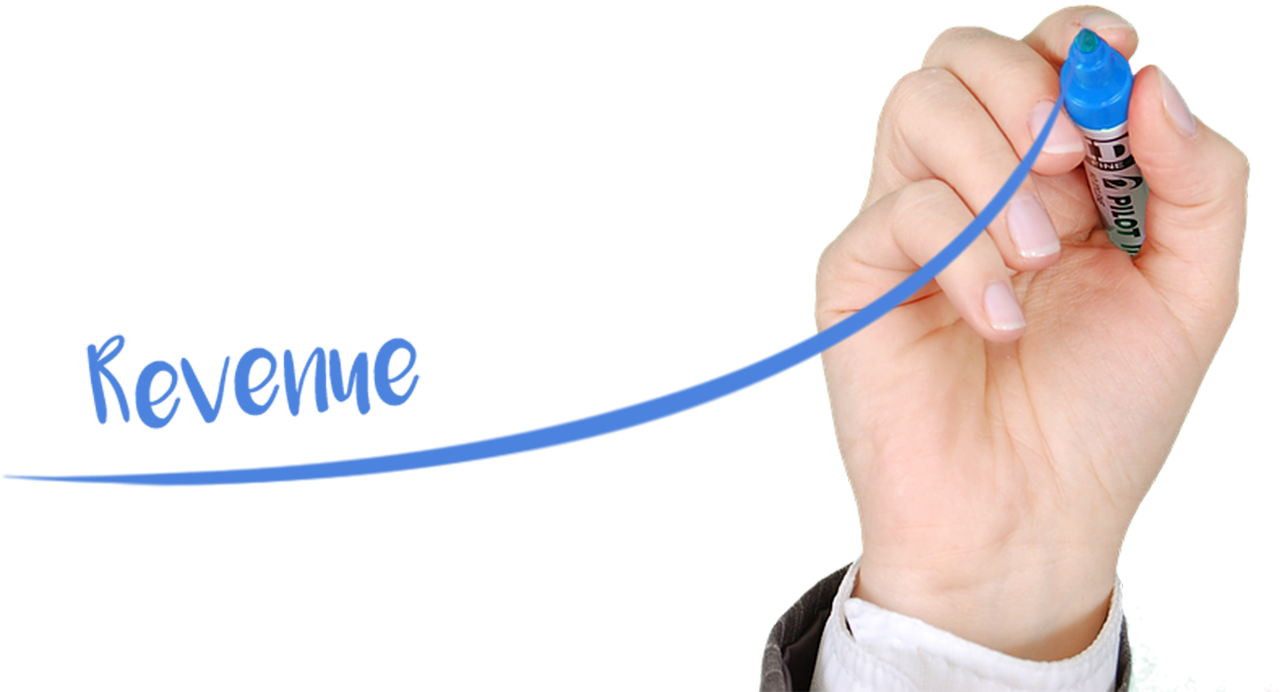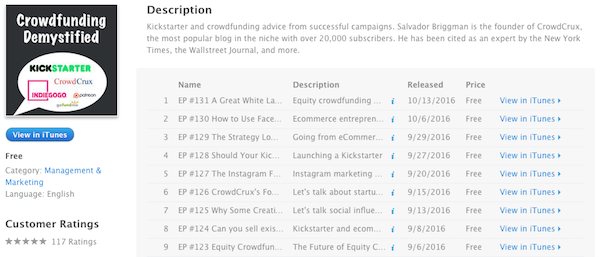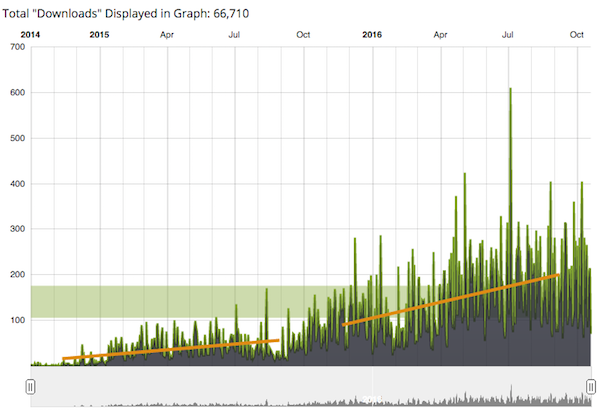Podcasting has exploded in recent years! In fact, podcast listening has grown 23% between 2015 and 2016.
With the advent of smartphones, bluetooth-enabled cars, and high quality shows, podcasting is on route to be a major game changer in the next 5 years.
I personally have started a podcast that has gone on to rack up over 100 positive reviews in iTunes. I’ve produced over 100 shows and have gotten much better at speaking into a microphone and producing high quality audio.
In past articles, I’ve discussed how you should approach podcasting if you’re a beginner. In this post, I’m going to share how I earned my very first $3,000 from podcasting.
Keep in mind that what’s worked for me might not work for you!
1. I realized the niche is more important than the content
I started my podcast after having blogged for several years. My podcast is in the same niche as my blog, meaning that there’s a lot of audience cross-over.
Having talked with other podcasters, the most frequent question that I’ll get is, “Hey, I’m super passionate about X, Y, Z and would love to be paid to talk about that. Should I start a podcast?”
While you must be passionate about your subject, the real question is, how many OTHER people are passionate about that same subject.
Because I run two online forums, a LinkedIn group, a Google+ group, and a blog in the same niche, I knew that I had access to a dedicate group of individuals who were passionate about the same subject as me.
When you’re starting your first podcast, ask yourself what OTHER people are going to get out of this show. Are they trying to learn something? Do they want to smile or be entertained on their way to work? What value are you adding to their life?
Once you choose your niche, be sure to make the BEST content possible.
2. I didn’t focus on show downloads. I focused on episode downloads
It’s very easy to get caught in the trap of vanity metrics. For instance, how cool does this look?
The podcast has done over 66,000 downloads! Woah!
While yes, those number seem cool, the per-episode downloads are far more important than the total downloads for your show.
Your per-episode downloads will be used by advertisers to determine how much you should be paid per sponsorship slot.
Also, I think that per-episode downloads are a better indication of how tuned in your listeners are to your message.
3. I built relationships with sponsors
I didn’t care how much money I made from sponsorships in the early days of the podcast. I was 100% focused on delivering a good experience to my sponsors. I wanted them to want to advertise on the show.
It’s hard to get someone to commit to a show that has very few or 0 episodes in iTunes. Make it a no-brainer! You can offer to do an affiliate agreement, discount the initial price, or even do it for free and have them see what kind of results you can generate.
I talk more about how to get sponsors for your podcast here. There is a standard pricing in terms of what you can charge an advertiser. According to Income School, “Most podcasters require that an advertiser order both the pre-roll and mid-roll for each show. So that’s $18 + 25 = $43 (US) per thousand downloads of your podcast.”
According to 100MBA, “A common CPM for a pre-roll ad spot of 15 seconds is $18 and $25 for a mid-roll. So if your show gets 5,000 downloads and your show does one pre-roll and one mid-roll an episode, you’re looking at: $18 + $25 = $43 X 5 = $215 an episode.”
It might seem like 1,000 downloads per episode is the starting point, but I had sponsors from the very beginning. I leveraged the connections that I made through the blog and gave my sponsors a discounted rate.
4. I created multiple income streams
Let’s just say that you start a podcast that publishes 3 episodes per week that average 1,000 downloads per episode. That’s $516 in sponsorship income or $43 X 3 X 4.
How else can you earn income from the show? One word… content marketing!
Yes, podcasting is content marketing at it’s core. Whether it’s an entertaining or informational podcast, the medium allows you to develop a relationship with your listeners.
You can use this relationship to direct traffic to various destinations, whether it’s a product page, an email list, a premium service, or a sales page.
Not every one of your listeners is going to be interested in what your advertisers have to offer, but they might be interested in what YOU have to offer.
Here are a few of the income streams that your podcast can have:
- Ecommerce: Physical product sales
- Courses and eBooks: Digital product sales
- Affiliate marketing: Product or service recommendations
- Consulting or services: Offer your time or expertise
- Premium events: Virtual or physical event tickets
- Membership access: Access to an online community or membership site.
- More.
5. I worked to get iTunes reviews
If you’re expecting people to just be nice and leave an iTunes review, you’re going to be waiting a LONG time for your first reviews. You have to go out there and ask people to leave them.
Whether it’s asking for reviews while you’re in the middle of recording an episode, directly messaging listeners who are a part of your community, or providing some kind of incentive, you absolutely must directly ask people to leave an iTunes review.
I have a theory that unless people experience a VERY strong emotion, they’re not that likely to take action. If someone experiences the emotion of anger, they’re going to take more time to leave a nasty review or comment. If someone experience the “oh my god!” emotion of wonderment, they’re also likely to leave a review or comment.
You should always strive to produce excellent episodes that make people want to leave a review, because they benefited so much from the podcast, but you should also ask people straight up to leave a review. You gotta be a bit pushy about it, but not overly annoying.
The total number of reviews that you have on your podcast is great social proof, but it’s really the velocity of reviews that iTunes cares about, which is why you gotta keep working for them. A podcast that gets a bunch of reviews in a short amount of time can rank higher than another podcast with more overall reviews.
6. I sent my own traffic to iTunes
Finally, I didn’t wait for iTunes to send traffic to my podcast either via iTunes search or by trending in the first few weeks. I sent traffic from my own blog, email list, and social profiles to the podcast.
This helped me gain greater visibility in the overall iTunes marketplace and also allowed me to get feedback early on so that I could continue to improve the shows.
I knew that when I sent traffic to iTunes that I could “lose” those visitors and they could go on to watch competing shows rather than mine, but I didn’t worry too much about that. I was 100% focused on developing an amazing relationship with my listeners, at any cost.
If there’s one thing that you do leading up to the launch of your podcast, build an email list. Email is still the highest converting source out there when it comes to getting visitors to take action. Of course, you should also start social media profiles on Twitter, Facebook, and other networks.
What’s your podcast?
I’d love to get to know you more! Leave a comment below sharing what your podcast is or why you want to launch a podcast. I’ll get back to you as soon as I can.


